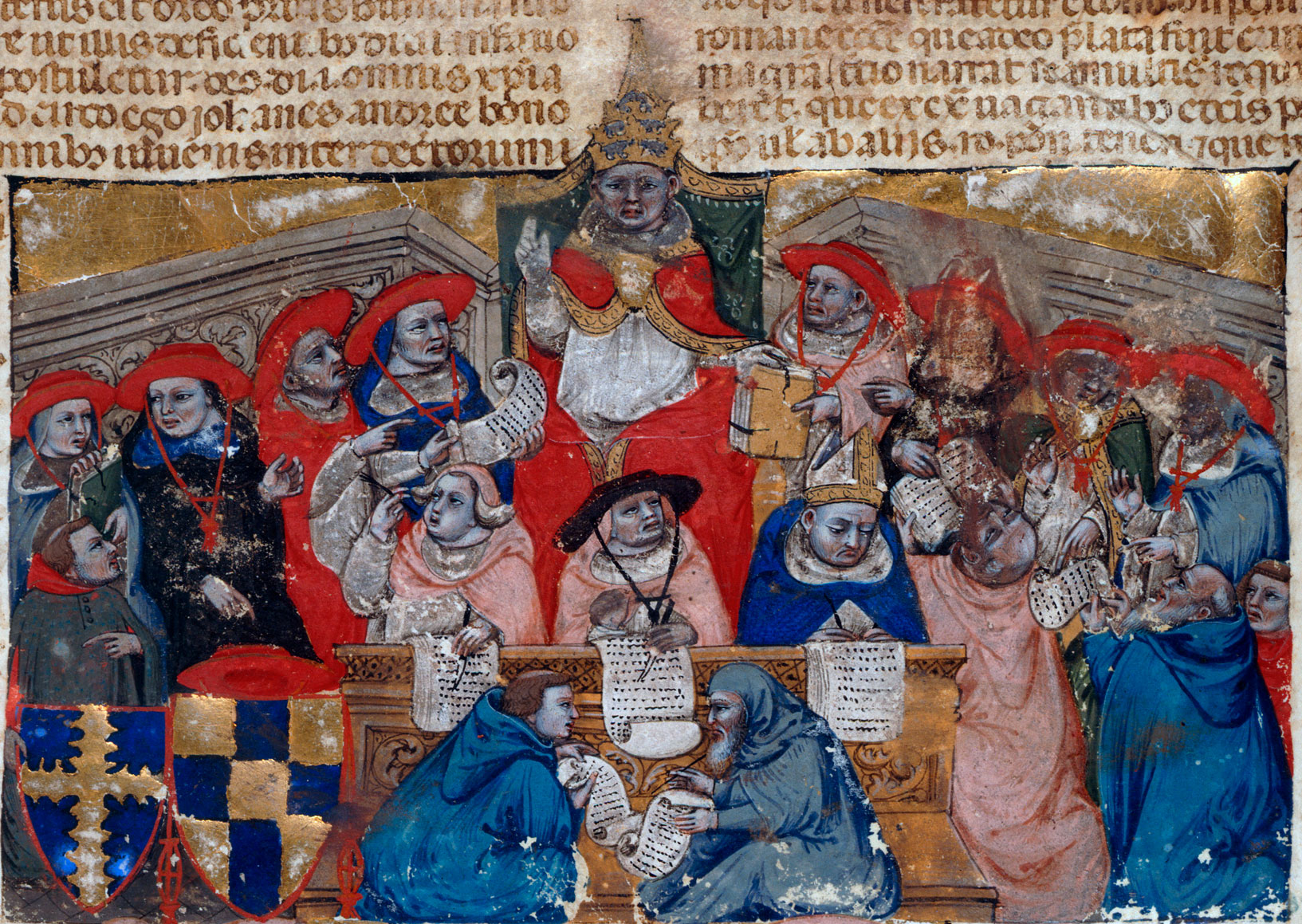With the revival of the study of Roman law during the twelfth century went a corresponding interest among churchmen in the systematization of canonical law. As the texts of Justinian’s civil law became familiar to the students in the law schools—of which Bologna in Italy was the most important—the Bolognese monk Gratian about 1140 published the Decretum, a similar effort to codify for the first time past decrees of popes, enactments of church councils, and decisions of church fathers dating back a millennium. Gratian tried to reconcile apparently conflicting decisions and produced for church lawyers an indispensable tool that emphasized the papal role.
Investiture was replaced in the papal-imperial struggle by what we today call “the Italian question”: How could an emperor be sovereign over Italy—including Rome—without trespassing on papal sovereignty? But if an emperor did not have effective sovereignty over Italy, did his title “Roman Emperor” become meaningless? Or was the pope in some sense the emperor’s feudal overlord for his Italian possessions, and was the emperor therefore the pope’s vassal?
By the 1140s a mosaic picture in the papal palace of St. John Lateran showed the emperor kneeling at the pope’s feet, and, as the inscription said, becoming his liege man and receiving the crown from him in return. This was not the sort of claim that a powerful or ambitious emperor would accept. And in 1152, when Frederick I Hohenstaufen (r. to 1190), nicknamed Barbarossa, “Redbeard,” came to the throne of divided feudal Germany, the issue was joined.

